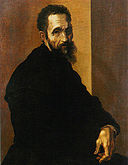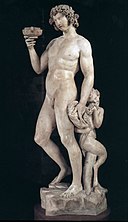Michelangelo di Lodovico Buonarroti Simoni was one of the most talented artists who produced some of the most influential figures of art. Even 450 years post his death, he remains the most celebrated sculptor and painter. Most of Michelangelo’s paintings and Michelangelo artworks notably depict the human body in several forms. His style of painting is known for its stark uniqueness in comparison to paintings that the other painters had adopted during the medieval period.
Here, we explore some of the most iconic Michelangelo’s paintings, sculptures, and other works of art.
The Sistine Chapel Ceiling
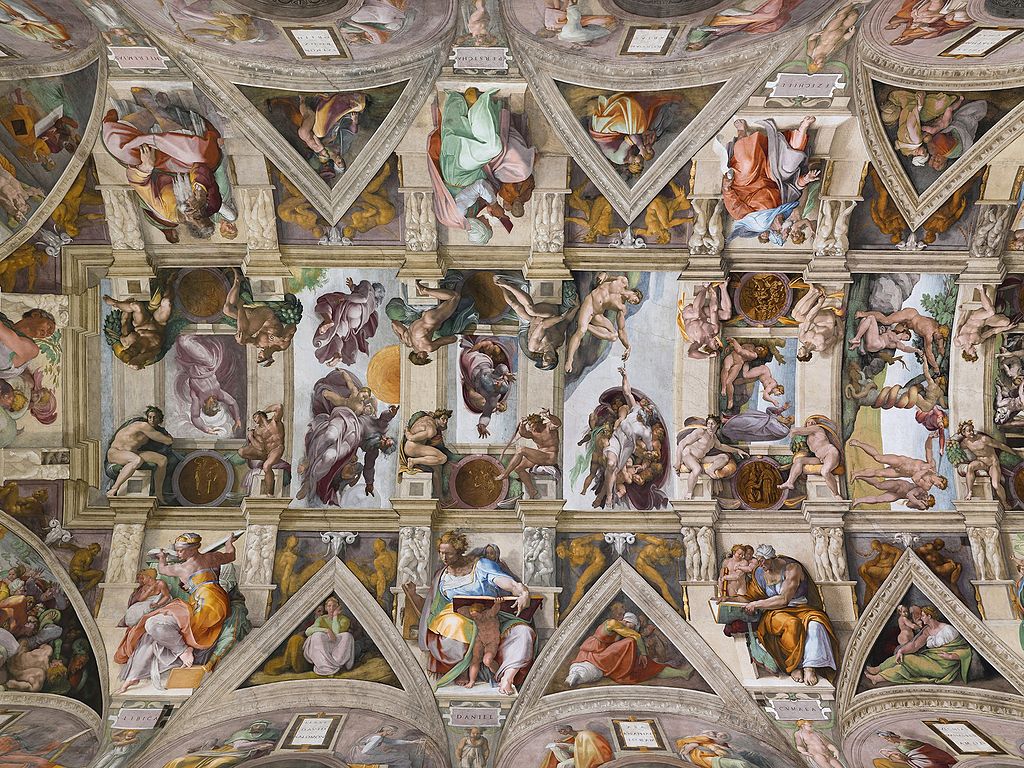
As soon as you hear Michelangelo artworks, the first painting that comes to mind instantly is the one on the ceiling of the Sistine Chapel. The ceiling of this chapel in the Vatican City displays stunning fresco Michelangelo’s painting curated by Michelangelo. Pope Julius II commissioned this work, and Michelangelo developed this between 1508 and 1512. This painting is the High Renaissance’s most significant works and depicts all the nine stories featured in the Book of Genesis. Initially, Michelangelo was reluctant to take up this work. The art lovers hugely appreciated the results back then, and even now, around five million people flock here to witness this marvelous work by him.
The Last Judgment Painting, Sistine Chapel

Another masterpiece of Michelangelo’s paintings in the Sistine Chapel is the “Last Judgment”. In this painting Michelangelo’s painting adorns the altar wall of the chapel. Michelangelo executed this painting about 25 years after the creation of the artistic fresco on the chapel’s ceiling. Often cited as the most intricate pieces made by Michelangelo, this spectacular work is a fine portrayal of the final judgment of mankind by God. This Michelangelo painting depicted nudity, and due to this, it had a very controversial past, so much so that the Council of Trent ordered to cover up the parts that seemed obscene.
Michelangelo’s David
Michelangelo’s David is quite possibly the most famous sculpture in the world. Michelangelo started creating this sculpture when he was just 26 years old and finished it in about three years. Several paintings and sculptures have shown the portrayal of David, a biblical hero, after triumphing in the battle with Goliath. However, only this structure made by Michelangelo shows the depiction of David in an alert and tense position. In 1504, Piazza Della Signoria in Florence housed this sculpture, however, since 1873, Galleria dell’ Accademia houses this sculpture by Michelangelo.
Bacchus
Bacchus is one of the very first large-scale sculptures created by Michelangelo. Michelangelo focuses on Paganism in this sculpture rather than Christianity. This sculpture depicts the drunken Roman God of Wine in a lolling stance. Cardinal Raffaele Riario originally commissioned this figurine, but later rejected it. However, in the 16th century, Jacopo Galli’s Roman Palace gardens became the home of Bacchus sculpture. Since 1871, Museo Nazionale del Bargello in Florence has accommodated this incredible structure alongside the other masterpieces by Michelangelo, like Brutus and David Apollo.
Madonna of Bruges

Madonna of Bruges is an iconic sculpture by Michelangelo, and it was the only sculpture that made its way out of Italy when the artist was alive. In 1514, the cloth merchant family of Belgium (Mouscron) purchased this sculpture and later donated it to Bruges’ Onze-Lieve-Vrouwekerk, which is the current home of this sculpture. Till now, there are only two accountable events of removal of this structure from the church. The statue was removed during the war of the French Revolution but returned to the church in 1815. During WWII, the Nazi soldiers looted it again.
The Torment of Saint Anthony
The Torment of Saint Anthony is one of the first works of art by Michelangelo, which he created when he was just twelve or thirteen years old. Currently, The Kimbell Art Museum in Texas houses this painting. This painting is based on an engraved art piece initially created by Martin Schongauer, who was a German printmaker and painter. The first biographers of Michelangelo, Ascanio Condivi, and Giorgio Vasari, have cited this painting in their work. This is a particularly accomplished art piece which has received tremendous appreciation worldwide, since its creation.
Doni Tondo
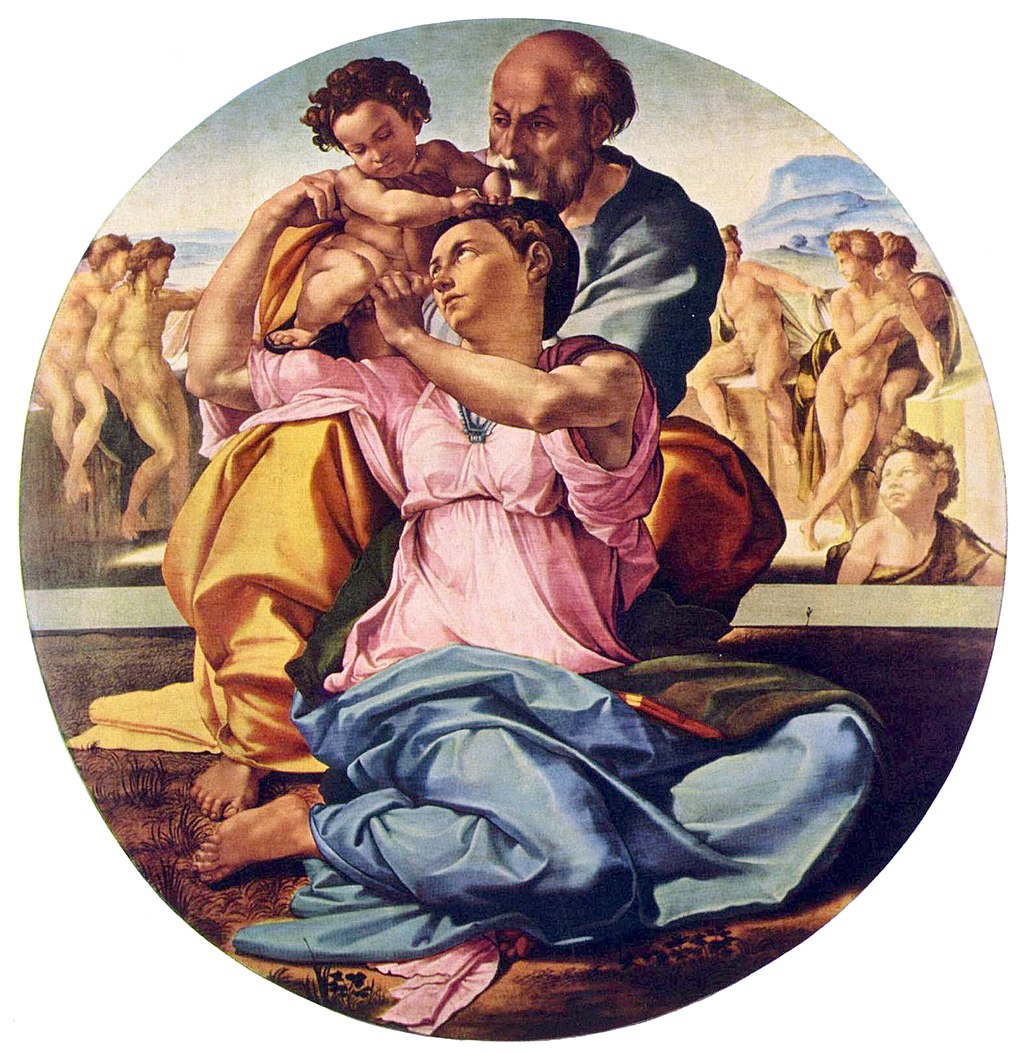
Doni Tondo, which means “The Holy Family,” is the only panel painting Michelangelo painted that has survived through the years. Michelangelo created this panel painting for Agnolo Doni, who was one of the wealthiest bankers in Florence. He created it to commemorate the banker’s marriage to Maddalena, who hailed from a noble Tuscan family (Strozzi). Michelangelo curated the original frame of this panel painting, which is a wonderful ornate wooden piece. Since the year 1653, this work of the artist resides in Galleria Degli Uffizi in Florence. The iridescent hues used in this Michelangelo painting with the subjects posing unnaturally, had earlier laid the groundwork the art movement by Mannerist.
Pietà
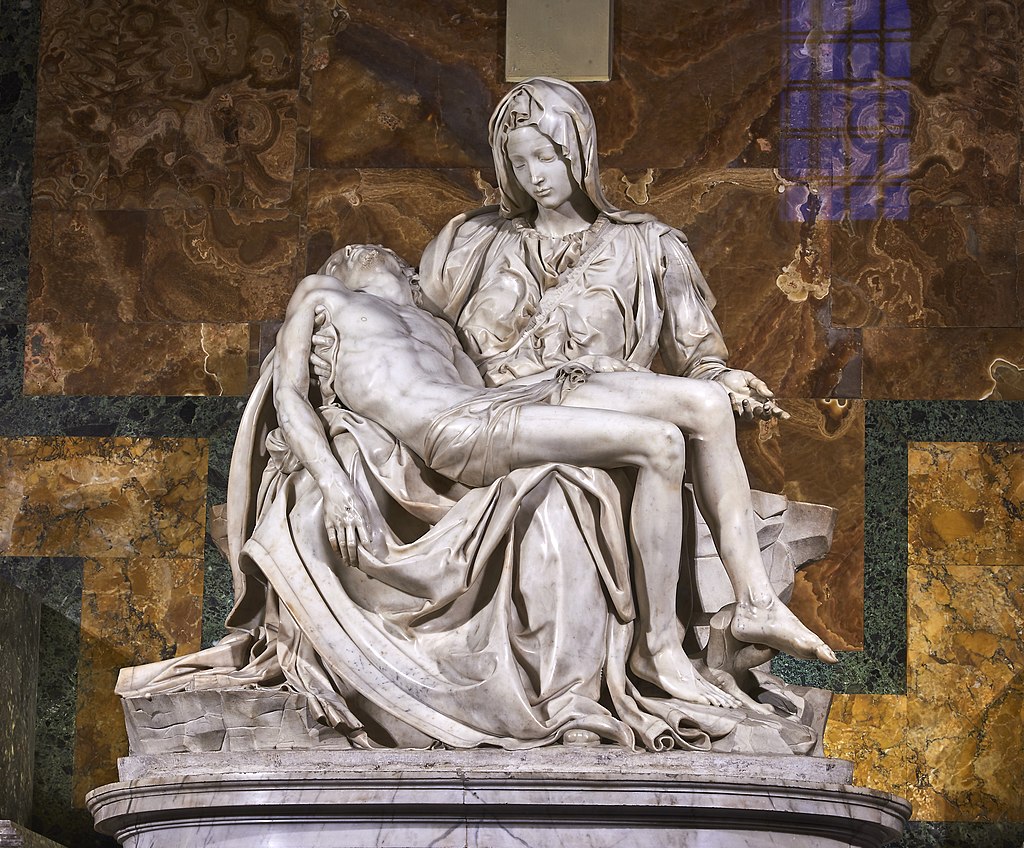
Pietà finds its place of residence beside the world-famous sculpture David. It is a creation by Michelangelo, made in the 15th century. It is one of the greatest works by the artist, and he originally made it to serve as the tomb of Cardinal Jean de Bilheres, who hailed from France. This evocative artwork shows the Virgin Mary holding Christ’s body after the event of his crucifixion. This was a common funeral monument theme in Italy during the era of the Renaissance. Since the 18th century, the Basilica of St. Peter serves as the home of the ornate sculpture. This sculpture has sustained notable damage over several years. Pietà is one of the only works of art which Michelangelo has signed.
Moses
Pope Julius II had commissioned this sculpture by Michelangelo as his funeral monument in 1505. However, it reached completion only after his death. This sculpture is chiseled artistically from marble with a pair of horns above the head of Moses. This sculpture depicts Vulgate’s literal interpretation, including both Rebellious Slave and Dying Slave. The Museum of Louvre houses this spectacular sculpture made by Michelangelo.
The Crucifixion of St. Peter

The Crucifixion of St. Peter was the final fresco Michelangelo painted in his lifetime. Originally, Pope Paul III commissioned this painting in the year 1541. Currently, you can find this painting in Cappella Paolina in Vatican Palace. In contrast to the other depictions of St. Peter of the Renaissance era, Michelangelo focused on the death of this saint through this painting. 2004 saw the commencement of a five-year long restoration project worth €3.2 million. This project led to the revelation of a fascinating fact about Michelangelo depicting himself in the painting in the form of a figure clad with a blue turban in the upper left part of the painting.
Creation of Adam Painting
This is a legendary painting by Michelangelo, which finds its depiction as a part of the vast masterpiece that adorns the interiors of the Sistine Chapel. This painting is one of the most innovative depictions of how the creation of Adam commenced. Contrary to the traditional works of art, in this painting, God is not displayed as regal, aloof, and way above mortal beings. The artist considered it essential to depict God intimately with the mortal man.
Fall of Mankind and Expulsion from Paradise Painting
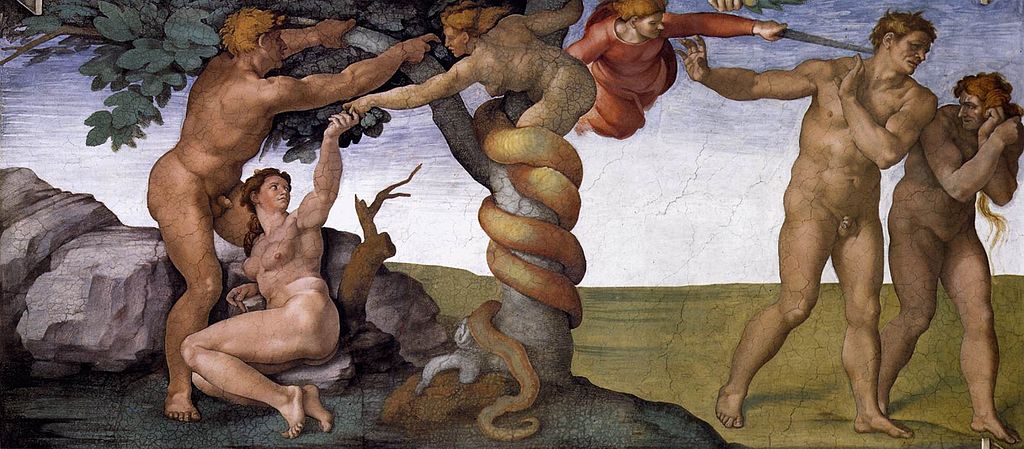
In the Fall of Mankind and Expulsion from Paradise Painting by Michelangelo signifies how humans must show their respect towards God and not draw influences by other distractions. The idea behind this painting is that if humans pay more attention to their possessions, they will land in several problems. Michelangelo perfectly captures the scene in this painting, which finds its roots in the Genesis, a book that encourages followers to go along the right course from God’s perspective.
Conversion of Saul Painting

This painting by Michelangelo displays an iconic event in the life of Saul, who was commonly known as “Paul the Apostle.” The artist made this stunning conversion painting in the later years of his life. Unfortunately, it failed to receive the same amount of popularity that was received by the other Michelangelo’s paintings. Perhaps the reason behind it was the moderate and modest use of the mannerist approach in the painting. However, this artwork is popular now and finds its home in Cappella Paolina, located in the Vatican Palace.
The Flood and Noah’s Ark Painting

This fresco painting perfectly captures the symbolic deluge of church sanctuary as Noah’s Ark. Michelangelo focuses more on human emotions during the natural disaster. This painting illustrates a scene of a flood where many people get lost and suffer due to their attachment to materialistic things. The other group of people access the Noah’s Ark and are safe as they are willing to give up materialistic things and worldly attachments.
The Deposition
This sculpture is a marvelous display of the skill and talent of Michelangelo. It is so complex structurally, and even the tiniest of intricacies are detailed with precision. This sculpture displays the deposition of Christ once he was taken down after crucifixion. It shows that he falls right into the arms of Mary Magdalene and his mother, the Virgin Mary. Right behind them is a structure which depicts Joseph of Nicodemus or Arimathea. This piece is very similar to Pietà.
Michelangelo was truly a renaissance man who holds notable achievements in different fields of intellectual and artistic endeavor. Therefore, he was and is considered a genius by several renowned artists of the world. He was among the first skilled artisans who received recognition for his marvelous work. One can never overestimate the influence of Michelangelo’s paintings and his other works on western art development.
